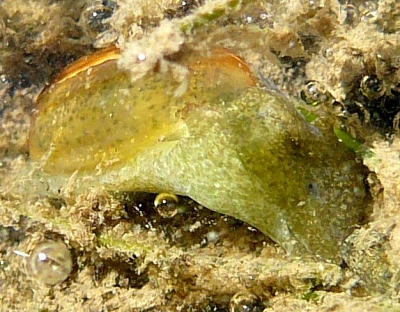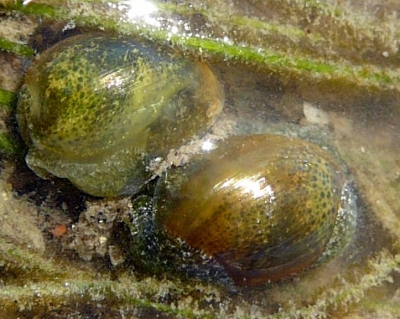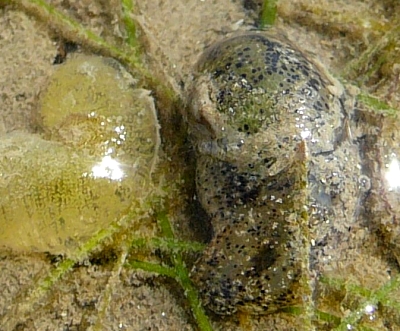Haminoea species from Townsville [2]
August 17, 2007
From: Melanie Wood


Re: message #20195
Hi,
Following my other message here are some more photos. I know that you do not like the same species to be placed together but I believe these are the same with slightly different colour variations, could you please aid in the ID?
Locality: Rowes Bay, Townsville, Low tide 0.49 metres and 0.39 metres, Queensland, Australia, 11 July 2007 and 10 August 2007, Intertidal Muddy. Length: 2 to 3 centimetres. Photographer: Melanie Wood.
Thanks
Melanie
gizmel@yahoo.com
Wood, M. J., 2007 (Aug 17) Haminoea species from Townsville [2]. [Message in] Sea Slug Forum. Australian Museum, Sydney. Available from http://www.seaslugforum.net/find/20462
Dear Mel,
I am posting both your messages together, so you won't have seen my comments on your first message. I really can't say if the mottled animal in the top photo is the same as the black-spotted ones in the other two photos. They probably are, but I would only be guessing. Sometimes when you have two possible 'species' together, you will find noticeable differences in the shape of the shell - one may be pear-shaped whicle the other is more symmetrical etc. Its possible you can irritate the animal enough to get it to retract into its shell so you can compare then alive or perhaps you can find some dead empty shells around to compare. Failing that I am afraid the only way is to humanely kill [sacrifice?] a few animals so you can compare the shells. Because the shells are so fragile, the only way to safely remove the animal is to let it rot out by soaking it in freshwater - changing the water daily so the smell doesn't get you, and the acids in the water don't destroy the shell.
Also it would be useful to get some assistance from one of the marine research institutions in Townsville so that some photographed specimens could be preserved for future research. I am sure someone will soon want specimens. I am happy to post messages of live animals and their empty shells. I have found that shells can often be photographed well by scanning them on an ordinary scanner. Often the colour is better than using a camera. Of course depth of field can be a problem with larger specimens, but worth a try.
Best wishes,
Bill Rudman
Related messages
-
Re: Haminoea species from Townsville [2]
From: Melanie Wood, August 21, 2007 -
Haminoea fusca? from Townsville, Queesnsland
From: Melanie Wood, August 17, 2007
